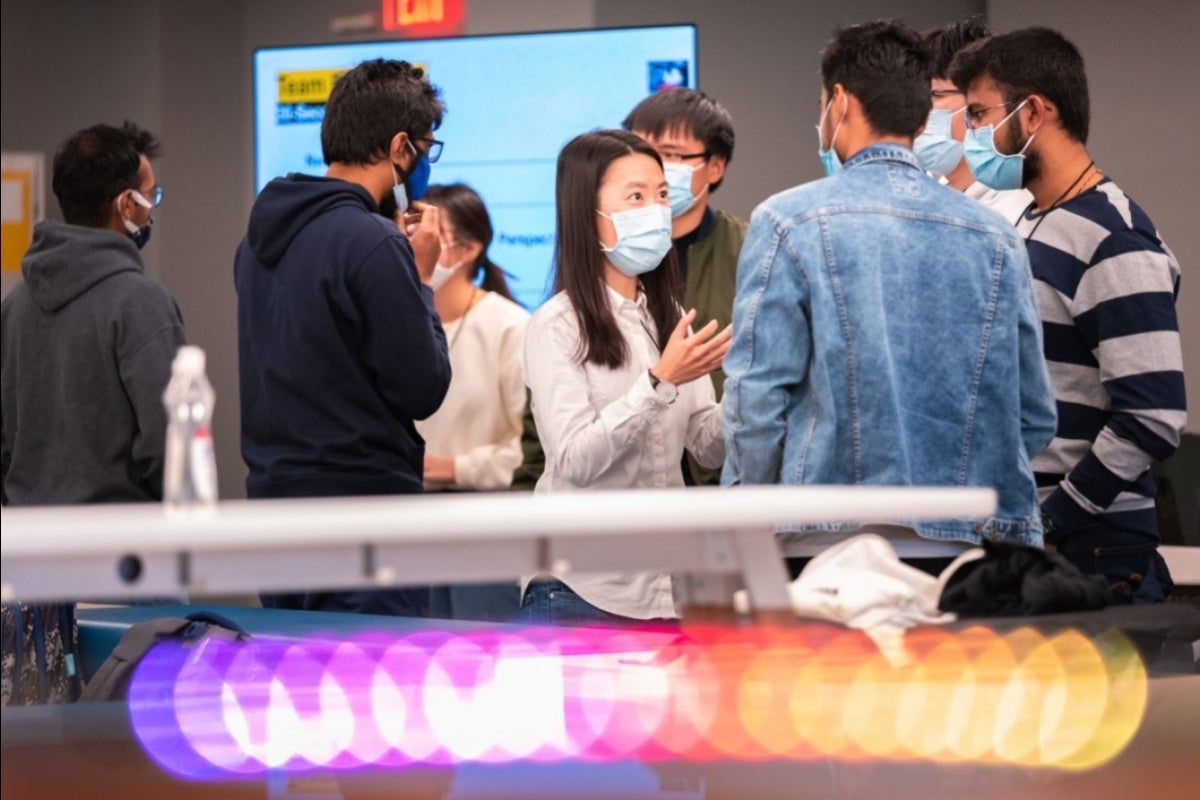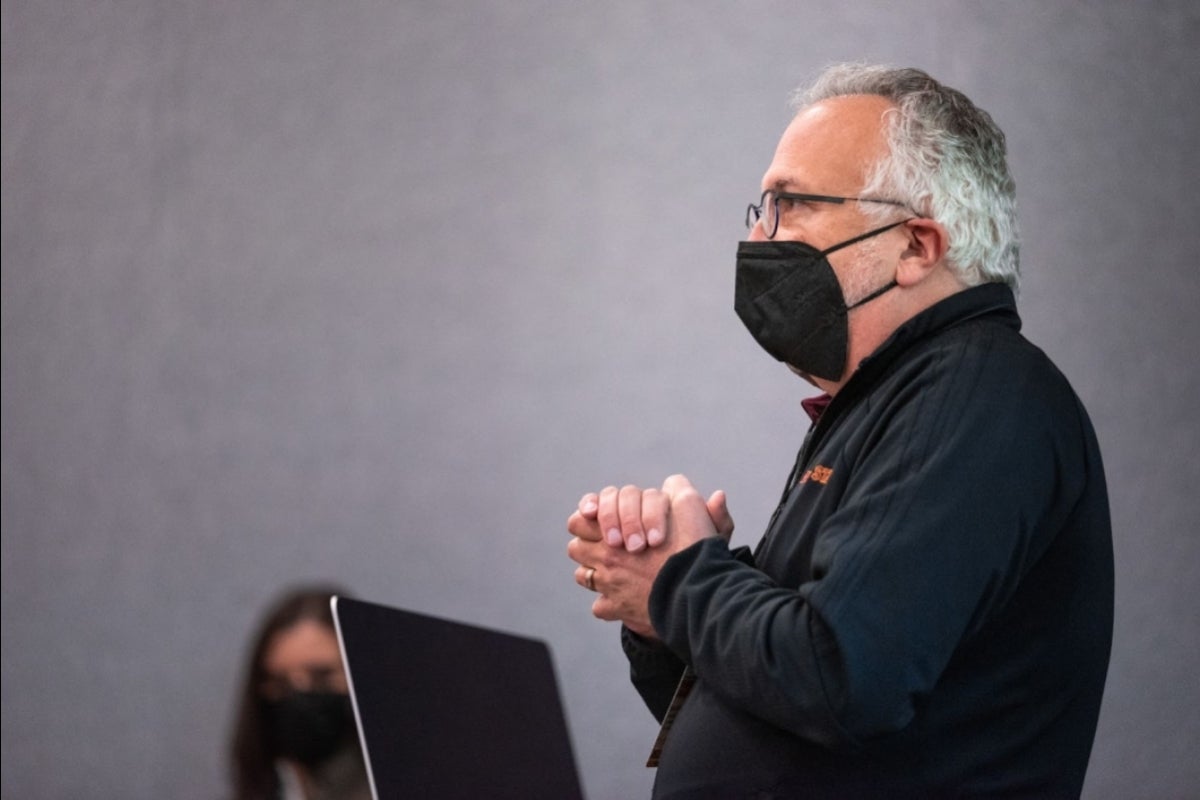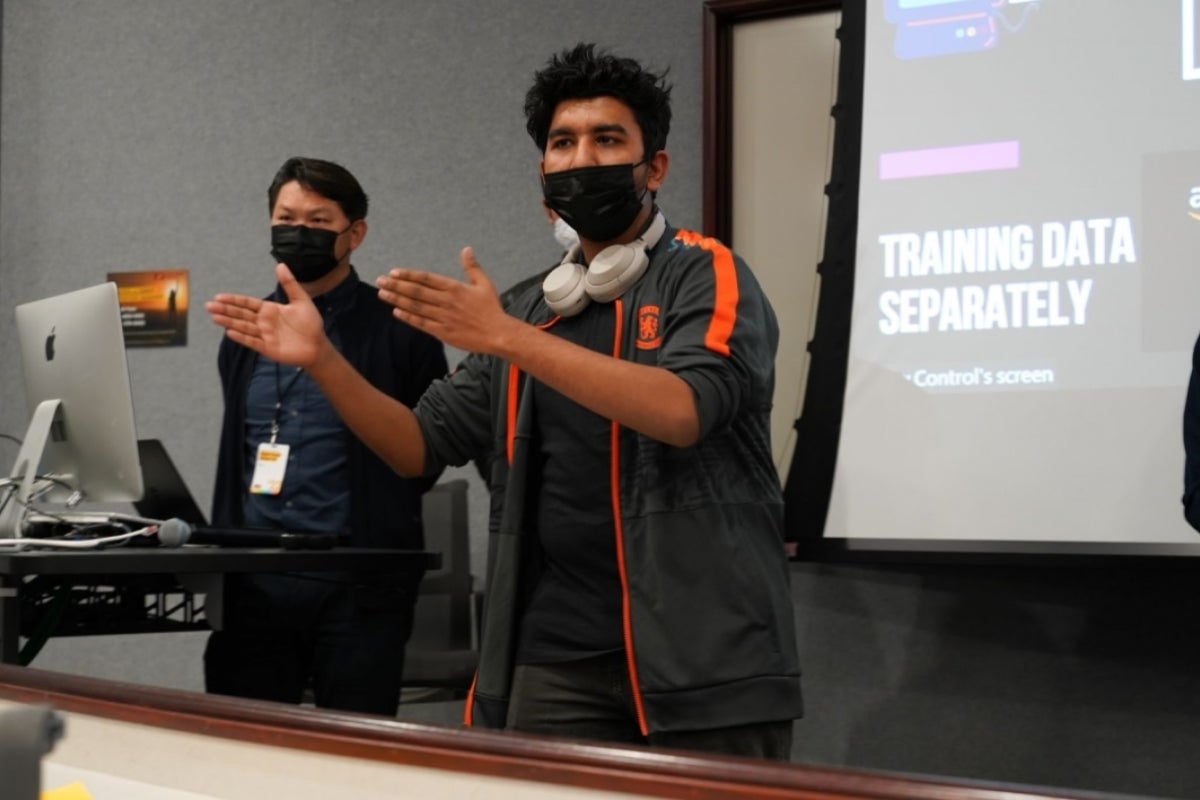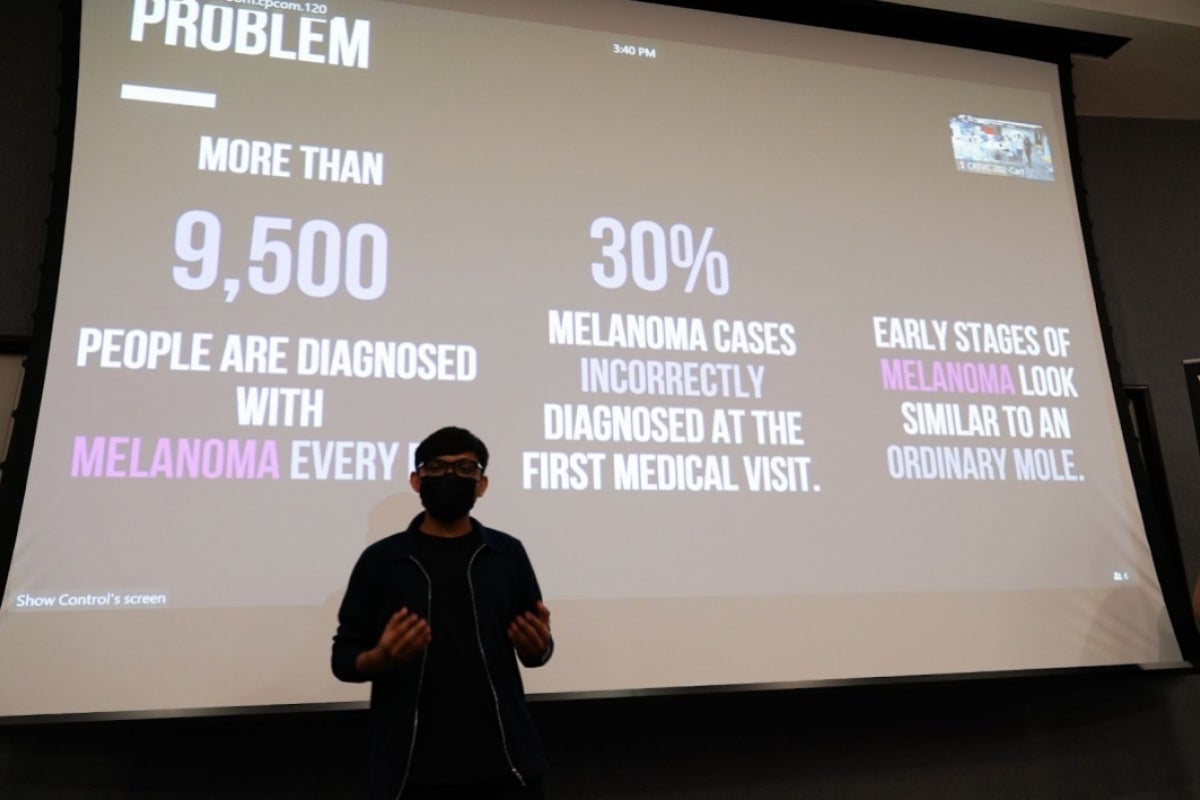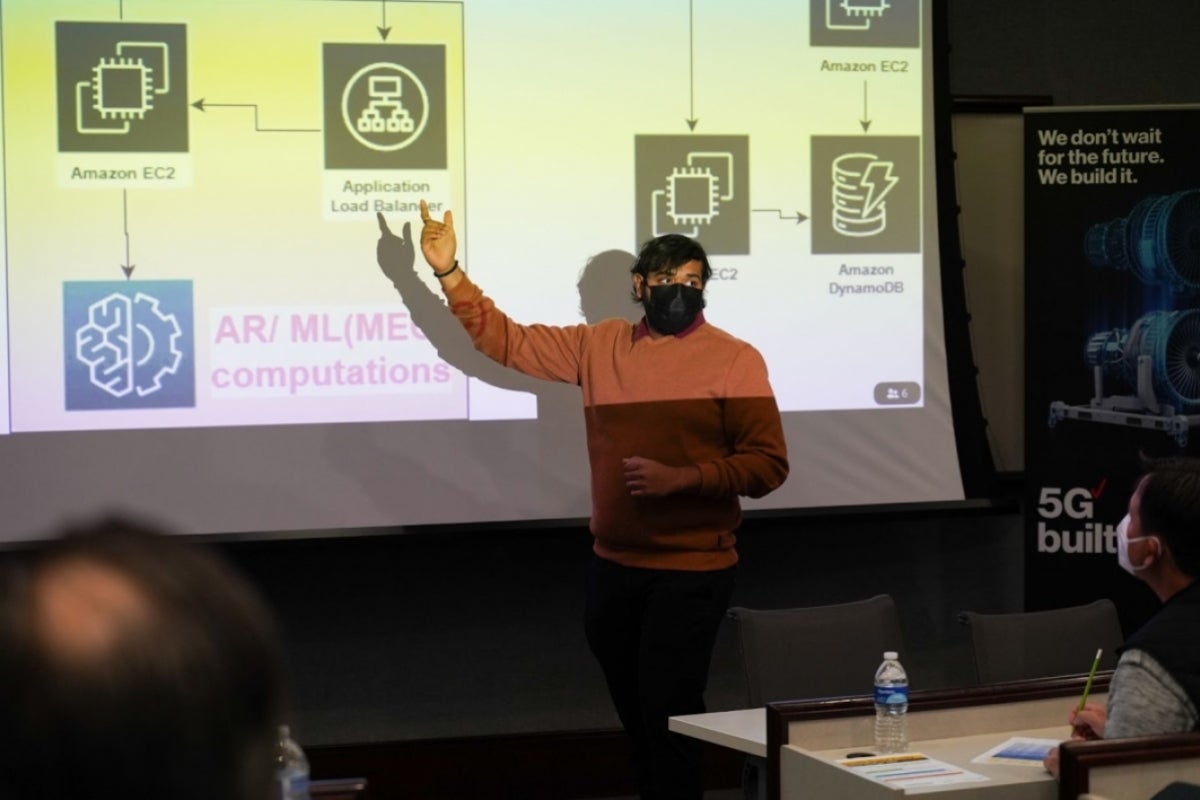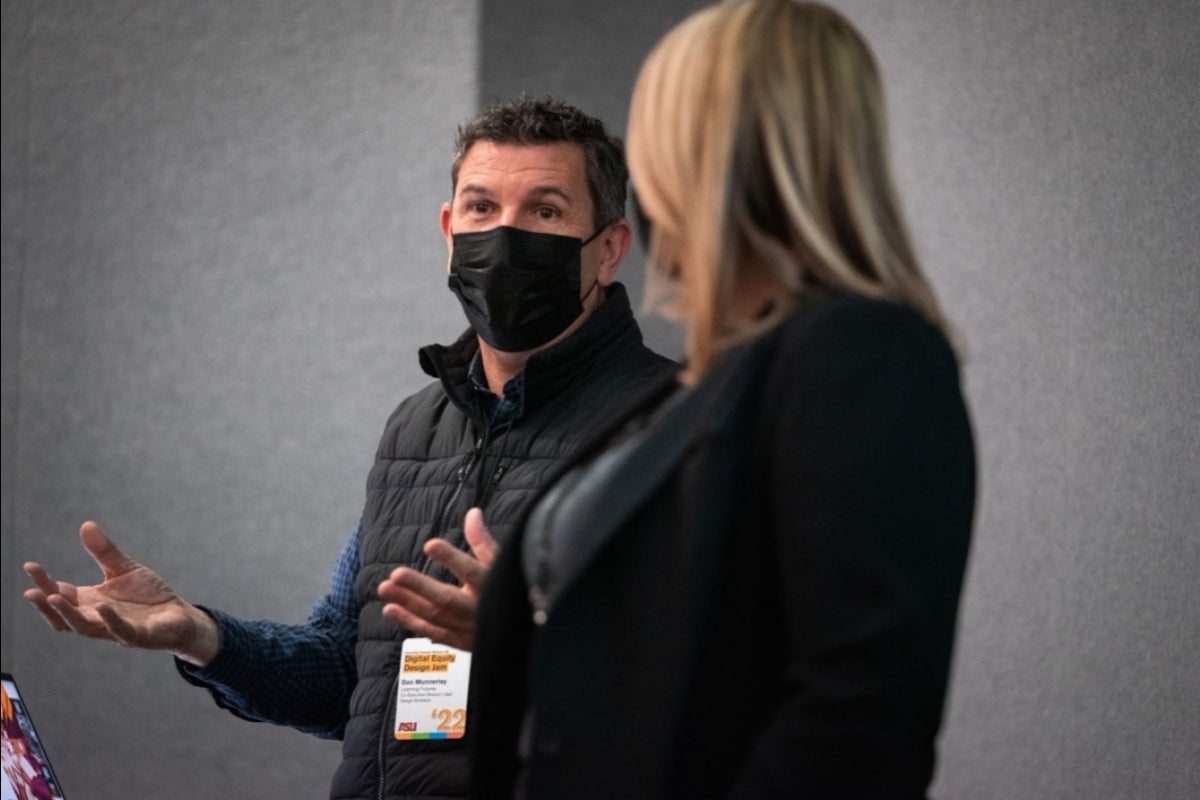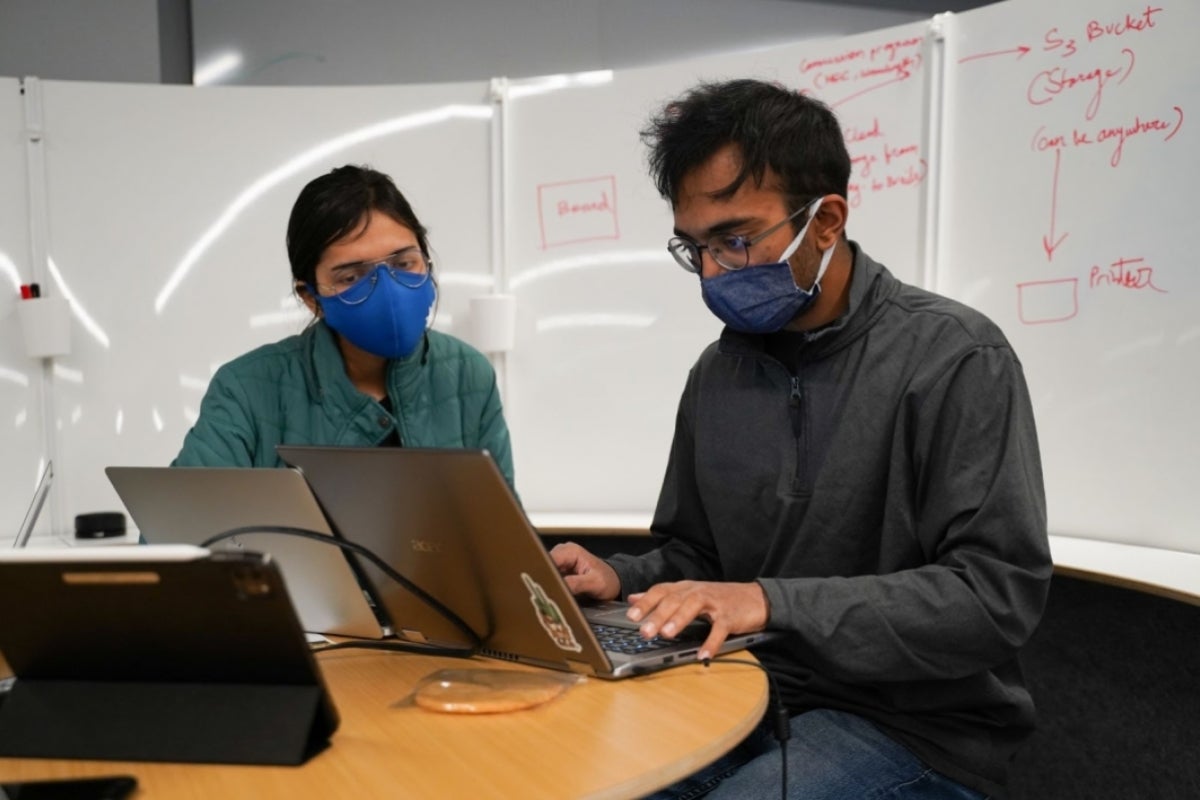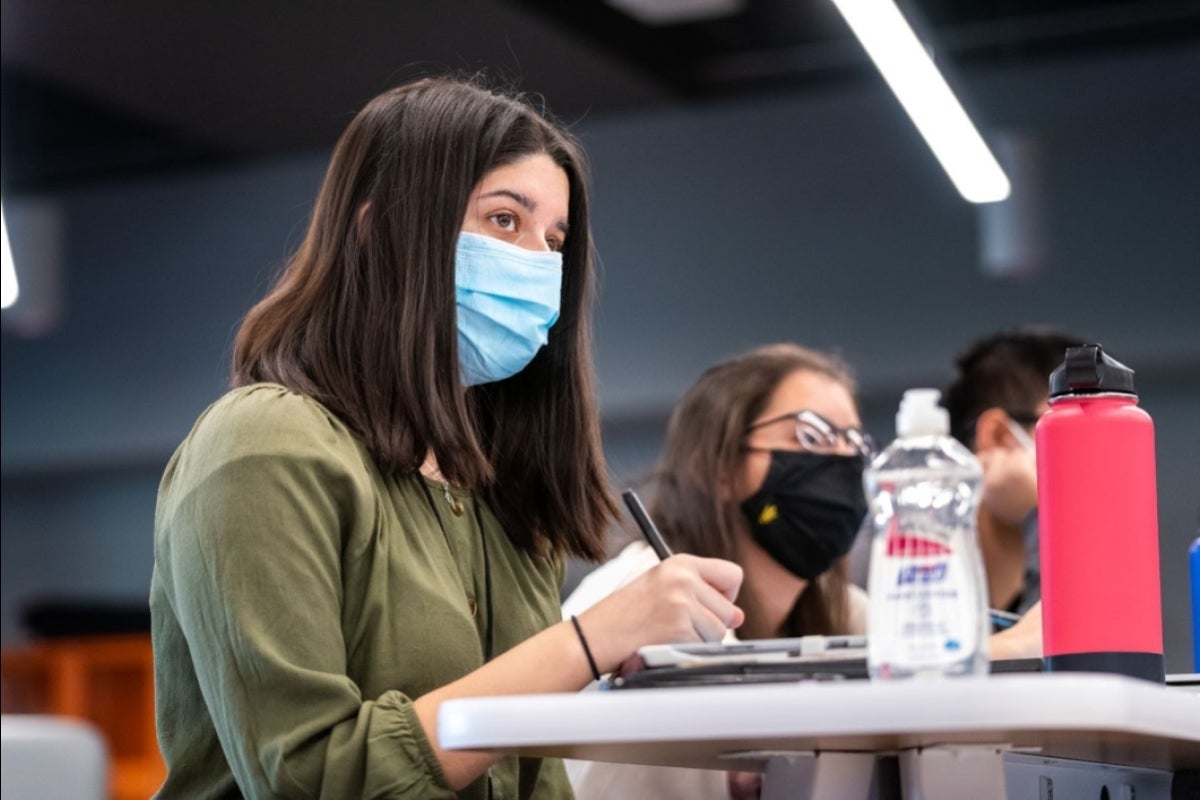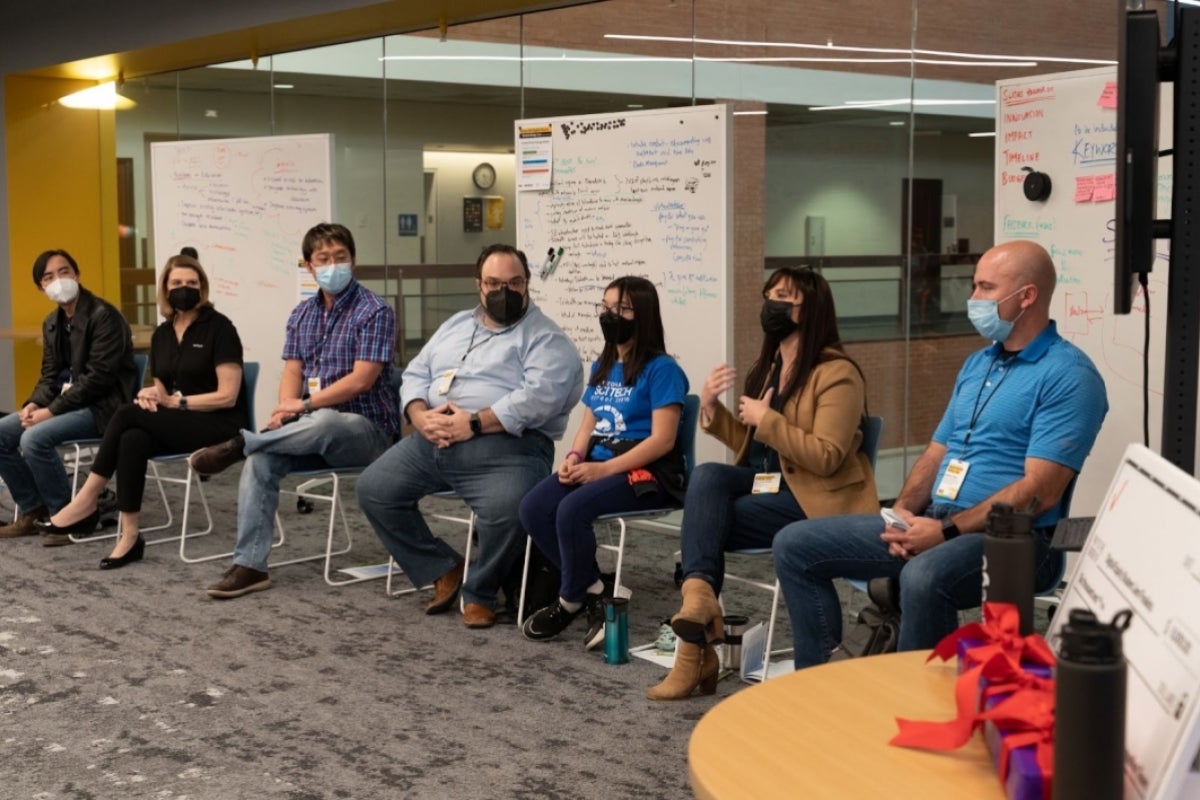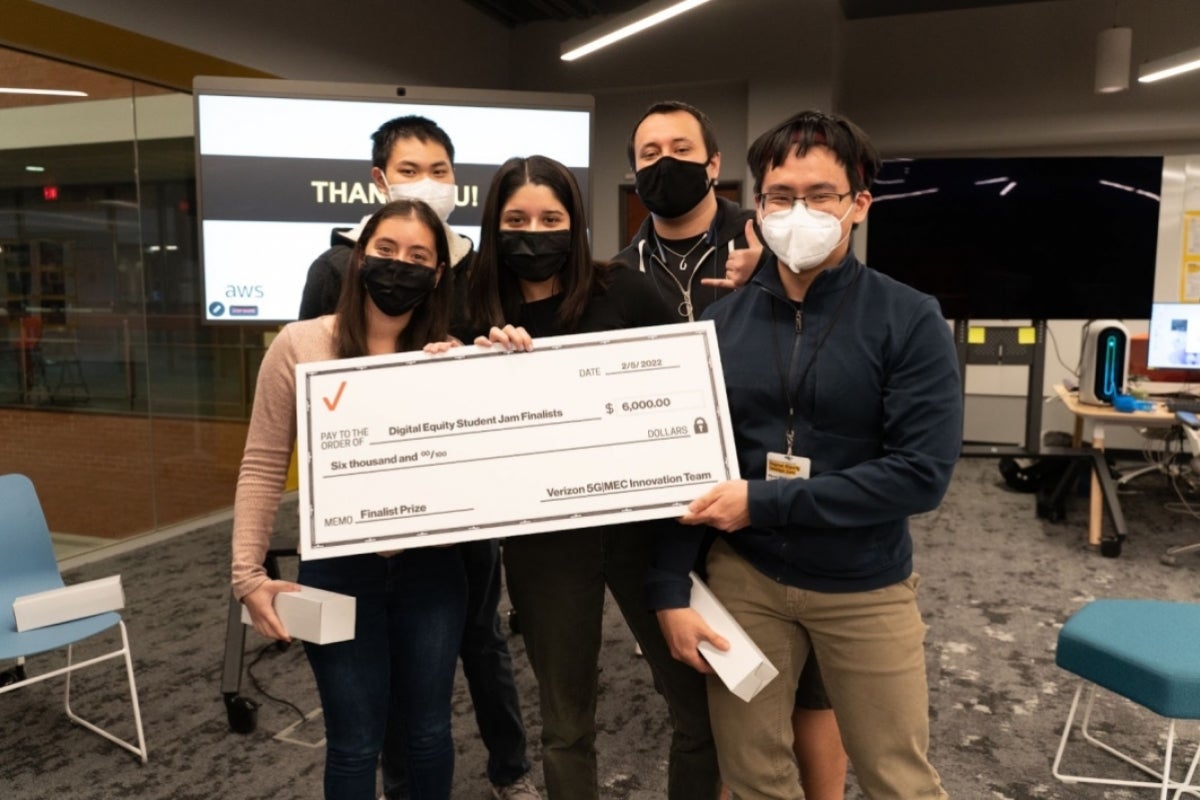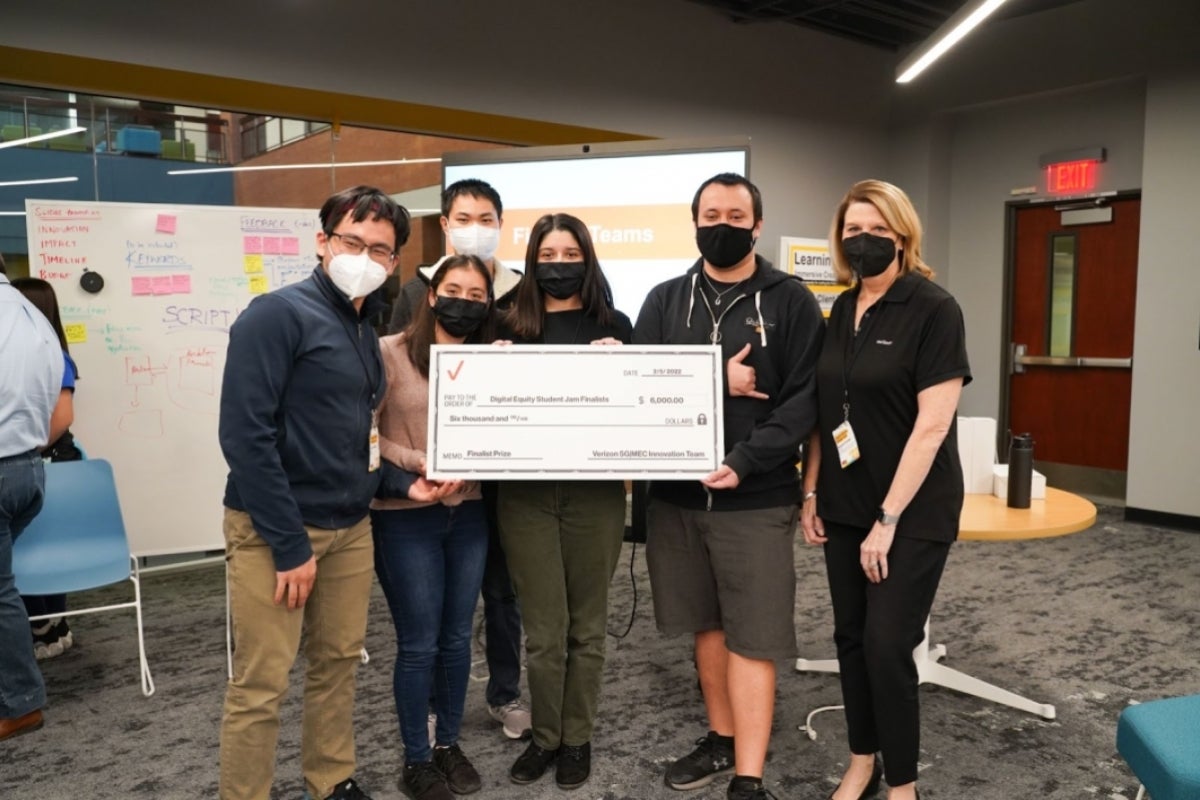If you’ve been to the Creativity Commons on ASU's Tempe campus this month, you may have noticed a flurry of activity on the second floor. That’s because the space in the Learning Futures Collaboratory now offers Verizon 5G Ultra Wideband indoors. This next generation of broadband opens up a new range of opportunities for students, faculty, researchers and local organizations to explore technology at speeds not available before.
Just last month, Arizona State University President Michael Crow announced the university would bring Verizon’s 5G Innovation Hub to its campus. And now, less than a month later, ASU students were among the first to receive education and training on this new wireless technology.
From Feb. 4–5, students from across disciplines came together for a jam-style event at Learning Futures. The event concluded with seven student-led teams pitching new ideas on how to apply 5G and wireless technology to enhance solutions that address education, health care and the environment.
Faster speeds, greater access: Training on 5G and MEC
Together, 5G and MEC (multi-access edge computing) provide wireless experiences unmatched previously in both speed and latency.
“People in our own backyard lack internet connection 一 5G and MEC will be able to extend the opportunity of wireless technology to rural and underserved communities not only in Arizona but around the world,” said Lev Gonick, ASU’s cheif information officer. “These are the groups that we aim to bring solutions to.”
With nearly endless opportunities to leverage 5G, the jam convened ASU faculty and industry leaders from Verizon, Amazon Web Services (AWS) and Inseego on Day 1 to educate and train students on the wireless technologies.
As the fifth generation of wireless network, 5G is the fastest so far. Verizon’s Jim Pfleger shared how these faster internet speeds are made possible through increased bandwidth. He explained that the more bandwidth available, the more data can be sent and received by computing devices.
However, faster speeds require a lot of data to move quickly between users and cloud data centers 一 which can be miles or even states away. For a network, the measure of delay caused by this movement is called latency. Part of 5G’s power is offering low latency, which is the minimal delay when streaming data.
This is where MEC comes in. AWS’ Saravanan Shanmugam and Aditya Challa explained that MEC brings the data processing power to the “edge” of the network. Simply put, MEC brings the cloud computing power physically closer to users, effectively reducing latency delays. This is critical when powering immersive learning experiences that require minimal delay to best replicate real-world environments in virtual reality.
Heather Haseley and Dan Munnerley, co-executive directors of ASU’s Learning Futures, shared how the "jam-style" approach encouraged participants to shift between roles, which fostered deeper levels of creativity and exploration.
“Industry leaders started as trainers to educate learners on the wireless technology, and then moved to a mentorship role for the projects,” Haseley said.
“Meanwhile, students shifted from learners to creators, applying 5G to create solutions that directly impact our communities,” Munnerley added.
With a better understanding of these technologies, students broke out into teams to begin exploring potential solutions that leverage 5G and MEC, with mentorship from industry and university coaches.
Teams pitch 5G-enabled solutions to improve the way we work, learn and live
The energy across the space was palpable throughout the multihour design sessions. Students self-organized into teams, working with mentors to craft their ideas and refine their pitches. By leaning into their unique and shared experiences, teams were able to create meaningful pitches that focused on the human impact of their technology-enabled solution.
And at the end of Day 2, seven student-led teams pitched solutions that leverage 5G and MEC to a panel of judges that included a mix of university and industry leaders. Based on the strength of these pitches, three teams were selected as finalists to receive up to $6,000 in seed funding to help bring their ideas from design to deployment.
Finalist teams included E.S.O., Healthshare and Bay Guys, focusing on education, health care and access to public services, respectively. All solutions explored how to strategically deploy using 5G and MEC to improve connectivity and privacy for users. Here's a look at the three finalists:
- To make learning more accessible for visually impaired students, E.S.O. designed a smart Braille board that would translate text (in this case, written instructions in the class) into Braille. The team presented its proposed technology stack, which focuses on accuracy and low latency, to transcribe in real time.
- With the focus on eliminating barriers to telehealth for rural communities, Healthshare’s goal is to make telehealth appointments as close to an in-office visit as possible using facial expression recognition that physicians could use to create a more comfortable telehealth visit.
- Bay Guys are designing an app that would provide individuals living below the poverty line, specifically those experiencing homelessness, with information about local assistance and emergency care that is available to this community. The app uses a 5G and MEC ecosystem to improve access to sustainable and reliable food, health, shelter and banking.
Additional pitches focused on education, health care and the environment. For example, the Sapling team created a game using augmented reality that has users plant or nurture existing trees, flowers or other plants and complete “missions,” such as trash collecting or charity work, to gain points in the game. Meanwhile, Talk to Me, a language learning application, uses a mix of artificial intelligence and virtual reality to provide feedback and simulate real-world interactions for language learners.
“When you trust students with devising solutions to some of the most pressing challenges in the world, they usually come up with the most insightful and creative ideas,” Haseley noted. “The teams from the jam definitely delivered on this in spades.”
From design to deployment, finalist teams will create proof of concept
So, what happens next? The jam serves as a jumping-off point for students.
The three finalist teams will use their seed funding to develop a viable proof of concept. The teams will reconvene in late March to pitch their solutions for a chance to be selected for a spot in the summer VentureWell program, where they will have the opportunity for entrepreneurial training.
Many thanks to the mentors and judges for dedicating their time and expertise:
Industry experts from Verizon and AWS acted as mentors, working directly with students to inform and improve their designs:
- Adi Challa, solutions architect, AWS.
- Brent Eiler, principal architect, 5G edge computing, Verizon.
- Jim Pfleger, distinguished architect, Verizon.
- Pablo Sandoval, business development lead North America, AWS.
- Russ Svoboda, managing partner, Verizon public sector.
- Saravanan Shanmugam, global lead solution architect, edge computing, AWS.
From university to industry leaders, an esteemed panel of judges provided insights into the pitches:
- Danny Kim, senior partner, solutions architect, AWS.
- Dominic Papa, U.S. leader of cloud innovation centers, AWS.
- Erin Carr-Jordan, head of social impact, senior director, ASU EdPlus.
- Eusebio Scornavacca, professor, ASU’s College of Global Futures.
- Greg Foley, director of business development, Inseego.
- Margaret Brooks, senior manager, enterprise innovation and 5G solutions, Verizon.
- Robert LiKamWa, assistant professor, ASU’s School of Electrical, Computer and Energy Engineering.
Written by Alisha Mendez, communications specalist, EdPlus at ASU
More Science and technology

Newly identified viruses found in dolphins
In a new study, researchers from Arizona State University together with national and international collaborators have identified anelloviruses in dolphins for the first time. Anelloviruses are a…
ASU Interplanetary Lab celebrates 5 years of success
Five years ago, an Arizona State University student came up with the idea of creating a special satellite in what was then the newly built Interplanetary Laboratory. The idea was to design…

ASU secures NSF grant to advance data science literacy as demand soars
In an era where data permeates every facet of our lives, the importance of data literacy cannot be overstated. Recognizing this critical need, Jennifer Broatch, a professor at Arizona State…

